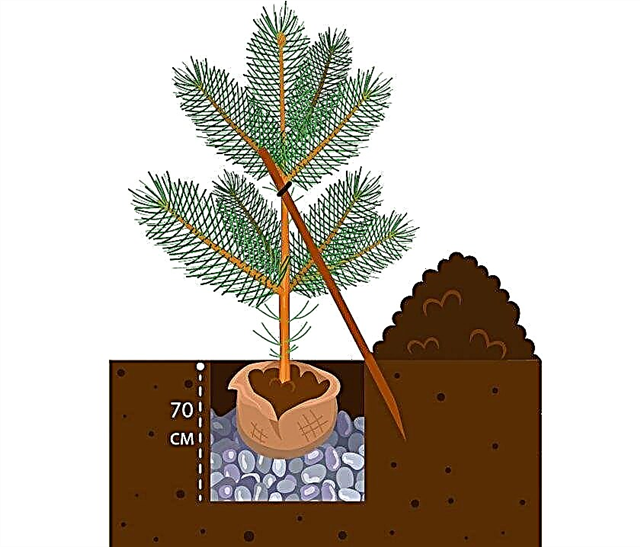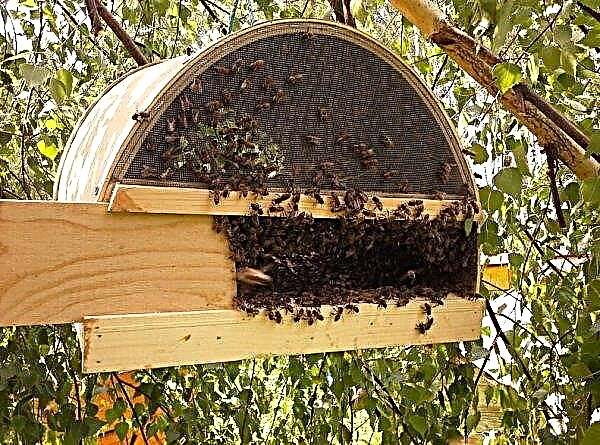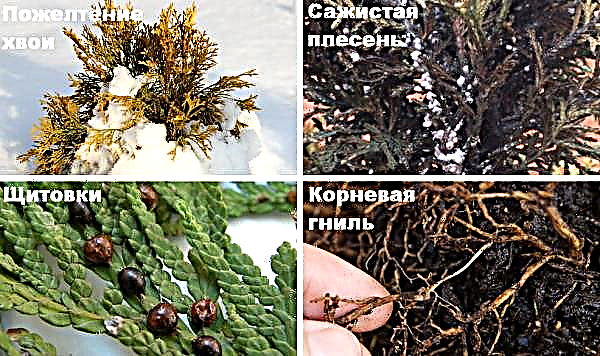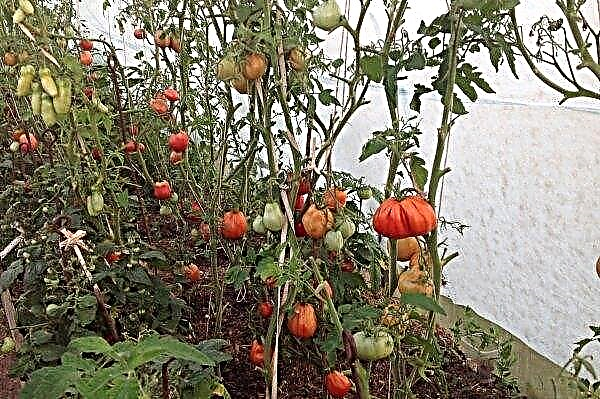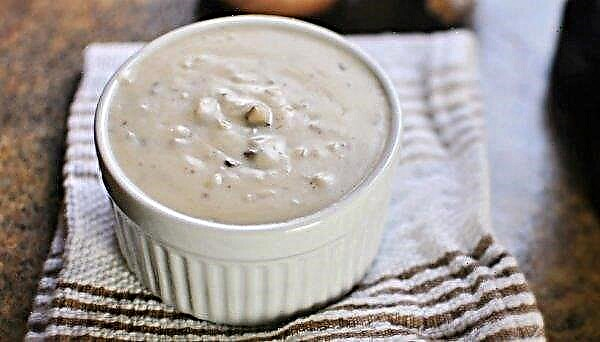Almost all the recipes for creating Easter cake existing today provide for the possibility of baking it at home, and the housewives can only choose the most suitable for themselves. Both the classic recipe, and the curd Easter, and the yeast-free version of this delicacy have their own advantages, and in order to dwell on a particular option, it is worth considering each of the popular recipes.
Classic recipe
In the classic version, Easter cake is a rich yeast baked in the shape of a high cylinder, the surface of which is decorated with a mixture of glaze and powdered sugar. The dough for him is cooked on a dough and is mixed twice.

3 hours 40 minutes
fresh boiled milk
0.5 l
compressed yeast
50 g
 Heat the milk a little and dissolve the yeast in it, for convenience, kneading them with your hands.
Heat the milk a little and dissolve the yeast in it, for convenience, kneading them with your hands. Add to the mixture another 5 tablespoons of flour and 2 of the same tablespoons of sugar, mixing them with a whisk until a homogeneous consistency.
Add to the mixture another 5 tablespoons of flour and 2 of the same tablespoons of sugar, mixing them with a whisk until a homogeneous consistency. Move the dough into a separate container, cover with a cloth and leave for fermentation in a warm room for half an hour.
Move the dough into a separate container, cover with a cloth and leave for fermentation in a warm room for half an hour. While the base is suitable, break four whole eggs into a separate plate and add to them 2 yolks of other large eggs, sugar (including vanilla), salt and flooded oil. Whip everything until lush foam.
While the base is suitable, break four whole eggs into a separate plate and add to them 2 yolks of other large eggs, sugar (including vanilla), salt and flooded oil. Whip everything until lush foam.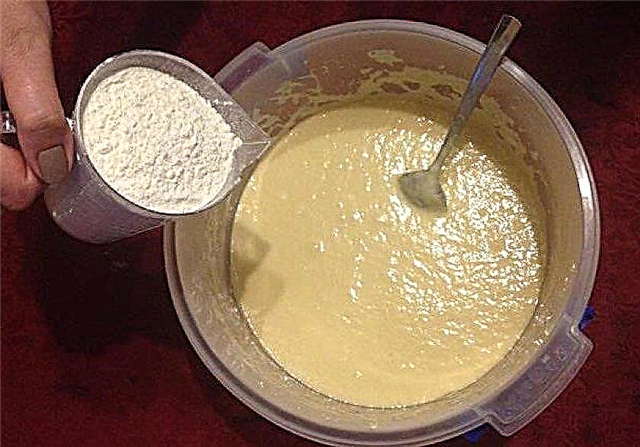 Put 2 cups of sifted flour into the mixture and mix well again (whisk or mixer can be used).
Put 2 cups of sifted flour into the mixture and mix well again (whisk or mixer can be used). Now, using a spoon, gently combine the jar with the mixture just prepared and try to achieve a uniform consistency.
Now, using a spoon, gently combine the jar with the mixture just prepared and try to achieve a uniform consistency. Pour the remaining flour portionwise into the resulting composition and knead the dough, kneading it for at least 10-15 minutes.
Pour the remaining flour portionwise into the resulting composition and knead the dough, kneading it for at least 10-15 minutes.
Important! No matter how liquid the dough seems, adding flour is extremely undesirable, otherwise the finished product will be knocked down, not airy.
To decorate the finished baking, glaze and powdered sugar, which can be purchased ready-made, will be used.
After this, it is worth insisting the mixture once again in a kneading bowl (so that it does not stick, the walls are smeared with sunflower oil) and add dried apricots and raisins to the dough, pre-steamed and thrown out in flour. The last batch lasts for 1–2 minutes, which will be enough to evenly distribute the fruit filling. At the end of the procedure, you should decompose the finished mixture into molds (into a third of their volume) and leave it in a warm room for 30–40 minutes. The rising dough is immediately sent to the oven, with a temperature of 180 degrees. Baking time - 30-40 minutes, depending on the size of the selected forms, after which it remains to cool the cakes and garnish with icing and sugar powder.
Curd Easter
Curd Easter is significantly different from the usual Easter cake, and primarily the lack of flour in its composition. However, this feature does not spoil the taste of the finished dish, so you can safely put it on the table, in addition to the traditional Easter.

 Pass the cottage cheese through a sieve, achieving maximum grinding of all the grains.
Pass the cottage cheese through a sieve, achieving maximum grinding of all the grains.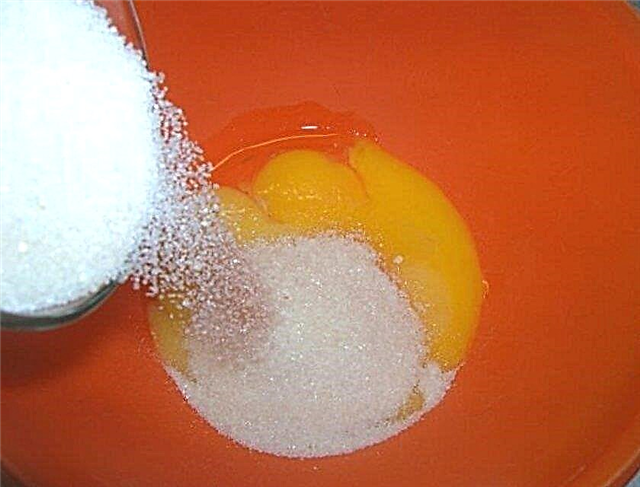 Mix the egg yolks with sugar and salt, rubbing them in a separate bowl.
Mix the egg yolks with sugar and salt, rubbing them in a separate bowl. In the resulting egg mixture, add the grated curd mass and combine it with sour cream.
In the resulting egg mixture, add the grated curd mass and combine it with sour cream.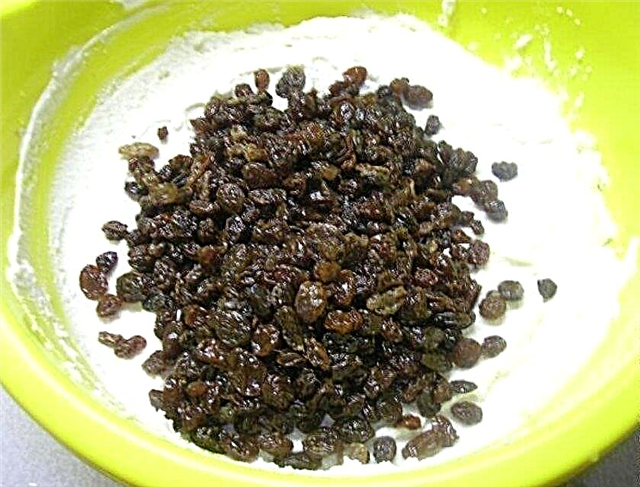 Pour the washed dried raisins and evenly distribute them throughout the volume of the “dough”.
Pour the washed dried raisins and evenly distribute them throughout the volume of the “dough”. Move the finished substance into a special form with holes or a colander covered with gauze, and cover the future Easter with a second piece of material, place a press on it (you can use several other plates). In this form, the structure should stand in the cold for at least 2-3 hours.
Move the finished substance into a special form with holes or a colander covered with gauze, and cover the future Easter with a second piece of material, place a press on it (you can use several other plates). In this form, the structure should stand in the cold for at least 2-3 hours. After the specified time, carefully turn over the curd curd on a plate and decorate with dried apricots or prunes. You can also use chocolate or nuts.
After the specified time, carefully turn over the curd curd on a plate and decorate with dried apricots or prunes. You can also use chocolate or nuts.
To decorate the finished baking, you can use dried dried apricots, icing and prunes, which diversify its taste. Unusual and tasty cottage cheese Easter is ready to eat.
Easter cake in the bread maker

The cake made in the bread machine turns out to be as light and fragrant as the products from the oven, but the work on its creation is much less. The recipe for making the dough has already been described above, so having milk, eggs, butter, flour, yeast, raisins, you just need them mix the breadmaker in the bowl and, having closed the lid of the appliance, select the “Baking” mode.
As soon as the allotted time for the process is over, wait another 10 minutes and get the cake. You can decorate it at your discretion using icing, melted chocolate, pieces of marmalade or ready-made packaged powder.
Video recipe
Easter cake in the bread maker
Kulich of Alexandria
The recipe for the test of Alexandria cake is different from the rest by the presence of cognac in the list of necessary products, which gives it a certain piquancy and an interesting flavor.

Combining the baked milk, sugar, butter, eggs, yeast, salt, flour, cognac and raisins (the proportions are indicated above), you get a dough ready for baking, which you need to put into forms 2/3 of their volume and put in the oven for 30– 40 minutes. The temperature in the oven must first be brought up to 180 degrees.
Important! Before laying in the oven, do not mix the dough that has grown in heat. The more carefully you divide it, the more magnificent will be the finished Easter.
Kulich Kraffin
This version of Easter cake differs from the rest in the presence of unusual components in the form of almonds and cranberries. This filling gives the finished baking not only an attractive taste, but also an elegant appearance, thanks to which the finished product will become a real decoration of the table.
After taking the product out of the oven, first cool it, and then decorate the surface as you like: in the simplest version, cakes are sprinkled with powdered sugar. [/ recipeInstructions]
Easter cake without yeast
Easter cake prepared without the use of yeast can be an excellent alternative to the classic versions using this component, and its preparation time is significantly reduced.

21 hours 30 minutes
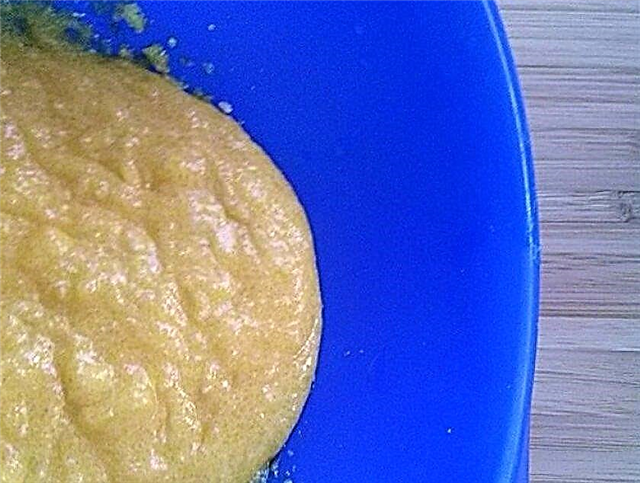 Bring the temperature in the oven to 200 degrees. Steam raisins in boiling water for 10 minutes and pat dry on a paper towel. Separate the proteins from the yolks and combine the latter with granulated sugar, adding pieces of butter. You can beat these ingredients with a mixer, the main thing is that as a result you get a homogeneous mixture without lumps.
Bring the temperature in the oven to 200 degrees. Steam raisins in boiling water for 10 minutes and pat dry on a paper towel. Separate the proteins from the yolks and combine the latter with granulated sugar, adding pieces of butter. You can beat these ingredients with a mixer, the main thing is that as a result you get a homogeneous mixture without lumps.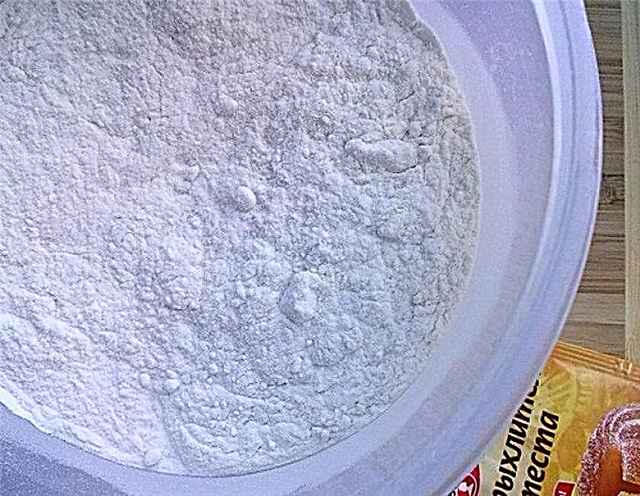 In a separate bowl, combine baking powder, vanillin and sifted flour, then add all this to the yolk-sugar mixture and beat well with a mixer again.
In a separate bowl, combine baking powder, vanillin and sifted flour, then add all this to the yolk-sugar mixture and beat well with a mixer again.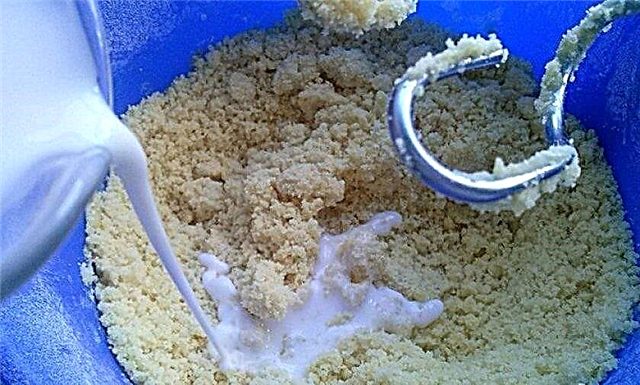 Pour milk slowly into the resulting substance, constantly stirring all the ingredients.
Pour milk slowly into the resulting substance, constantly stirring all the ingredients.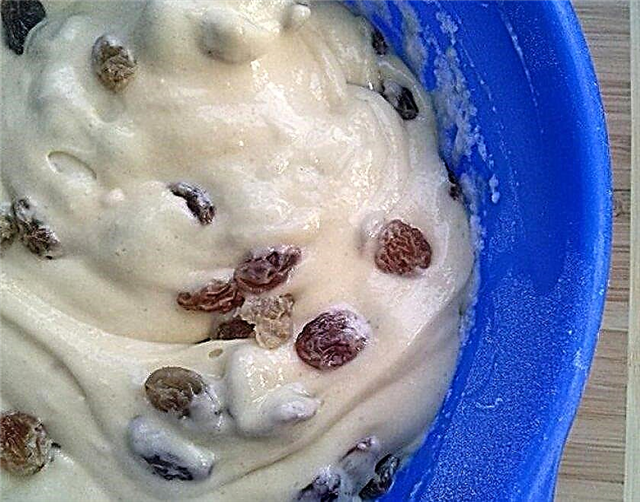 Beat previously separated proteins until stable peaks are obtained and add to the prepared dough.
Beat previously separated proteins until stable peaks are obtained and add to the prepared dough. At the end of the process, pour out the washed and dried raisins, trying to evenly distribute it throughout the volume.
At the end of the process, pour out the washed and dried raisins, trying to evenly distribute it throughout the volume.
Pour the dough into the prepared baking dish (it is better to immediately grease it with oil) and place in a heated oven. The baking time is 1 hour, after which the browned cakes should only be greased with fondant and decorated at your discretion.
Easter Easter cake with candied fruit
The Italian Easter cake is called “Panettone” and according to taste data it resembles traditional Russian Easter, except that instead of the usual raisins, candied fruits are used in this case.

44 hours 30 minutes
vanilla sugar
1.5 sachets
- To create the dough, combine the sifted flour, yeast, sugar and warmed milk in a separate saucepan, and, covering the container with cling film, place it in a warm place for an hour until the dough is doubled.
- Take one egg and separate the protein and yolk. The latter will be needed to further lubricate the Easter cake surface.
- Combine the slightly flooded oil with the eggs and the remaining egg yolk, adding sugar and lemon zest to them (all components should warm to room temperature).
- Pour the sifted flour onto the countertop, make a small indentation in the center of the slide, and pour in the previously prepared sponge and the oil mixture.
- Gently mix all the ingredients and knead the dough so that it remains slightly moist, but not sticky to your hands.
- Add candied fruits and nuts to the mixture, roll everything into a small bowl and put it into a deep bowl greased with sunflower oil.
- Cover the batch with a film and leave for another 1–1.5 hours for the growth of the future Easter cake.
- After the specified time, lay the dough on a flour dusted tabletop and rinse a little.
- Transfer the workpiece into prepared forms, filling with dough 2/3 of the entire volume of containers, and cover with a cling film for 60 minutes.
- Mix the remaining egg white with a spoon of water, and then gently grease the surface of raw Panettone.
- Place the billet in an oven preheated to 180 degrees for 1 hour, leave to bake.
Important! Control the baking process: if the Easter cake surface becomes too ruddy, you will need to cover the form with foil, periodically removing it to check readiness with a wooden skewer.
Cooked Panettone needs to be cooled and only after that proceed to the decoration of the surface, although this is not necessary.
Video recipe
Pp-cake
This recipe for making Easter cake is suitable for those housewives who want to bake the most useful holiday product, using cornmeal, oat bran and coconut oil. In addition, a characteristic feature of PP-cake is the absence of sugar in the composition, and maple syrup and sweetener can be used to sweeten the finished product.

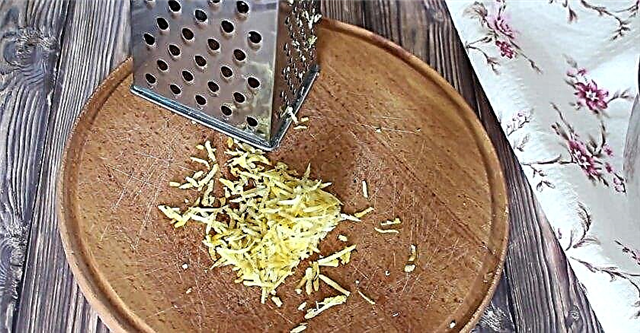 Peel the washed lemon peel.
Peel the washed lemon peel.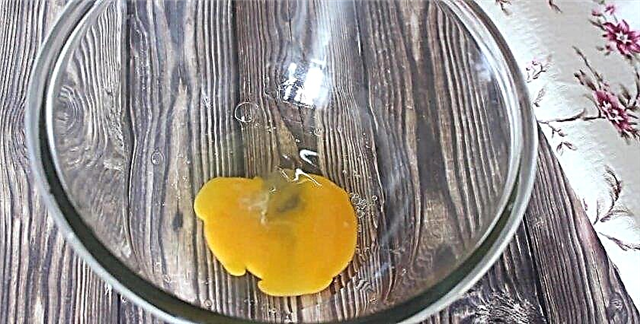 Beat two eggs in a bowl and beat them well with a mixer, using the appliance for two to three minutes (until a fluffy foam forms).
Beat two eggs in a bowl and beat them well with a mixer, using the appliance for two to three minutes (until a fluffy foam forms). Pour oat bran, corn flour and whole-wheat flour to the eggs, pour in coconut oil, mixing everything thoroughly.
Pour oat bran, corn flour and whole-wheat flour to the eggs, pour in coconut oil, mixing everything thoroughly. Add walnut, baking powder, lemon zest, kefir, washed raisins and turmeric to the finished mixture.
Add walnut, baking powder, lemon zest, kefir, washed raisins and turmeric to the finished mixture.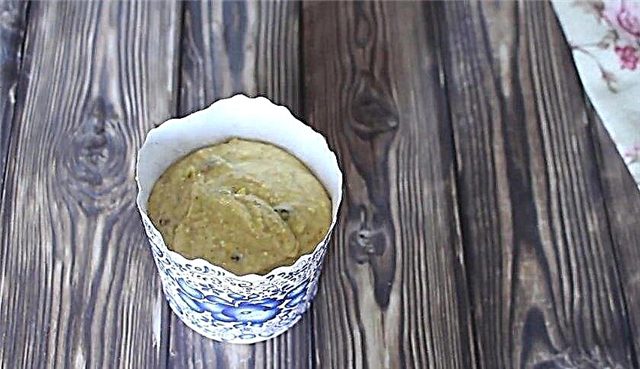 After mixing all the ingredients, add the sweetener to taste and transfer the mass to the prepared form.
After mixing all the ingredients, add the sweetener to taste and transfer the mass to the prepared form.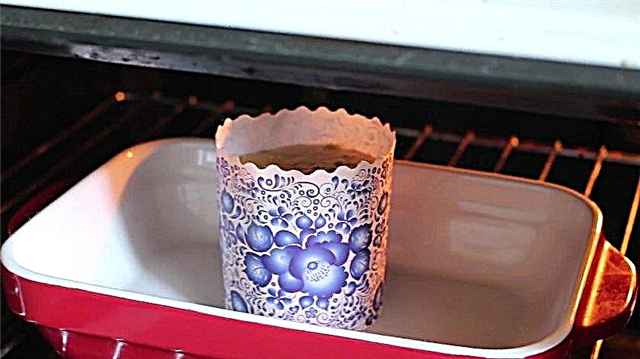 Bake Easter cakes in the oven, with a temperature of at least 180 degrees. Baking time - 40 minutes.
Bake Easter cakes in the oven, with a temperature of at least 180 degrees. Baking time - 40 minutes.
Ready-made PP-cakes decorate in the same way as ordinary ones, but instead of the classic fudge, you can use melted chocolate and confectionery powder.
Video recipe
Lace cake
This type of Easter cakes differs from the rest in its unusual lace shape, which makes the finished product more attractive. The main components are the same as for other varieties of Easter, but thanks to the filling, this Easter cake is distinguished by its aroma and unusual spicy-nutty flavor.

3-51 hours 30 minutes
turmeric, nutmeg, cinnamon
a pinch
- Heat the milk and sprinkle a small spoonful of sugar and two tablespoons into it. In this form, the dough should stand for at least 10 minutes and rise slightly.
- Combine in a separate container one whole egg and three more yolks from other eggs, preferably domestic ones. Pour a pinch of salt and sugar to them, and then beat with a mixer to get a homogeneous mass.
- Melt a small piece of butter (70 g) and, together with the beaten yolks and slightly cooled butter, pour the mixture into the flour, adding a small amount of turmeric, cinnamon, nutmeg to it in advance.
- Gently mix the mixture with a spoon, add the chopped orange zest and knead (possibly using a food processor). At first, the dough may stick, but as a result it should stretch well and not tear along the edges.
- Place the workpiece in a greased container and tighten with a film, leaving it as such for an hour in a warm room.
- Once the dough is doubled, divide it into two equal halves and roll it into buns, then cover with a film for another 15 minutes.
- Roll each of the pieces into a thin layer and smear with melted butter, while sprinkling with chopped nuts and pieces of chocolate.
- Roll the dough into a roll, cut it in half and twist the halves into a snail so that the cuts are on the outside.
- Cover the baking dish with parchment paper and carefully lay out the twists in them (it is good if the dough is infused again, at least 10 minutes).
- After heating the oven to 200 degrees, place the cakes inside and bake for 10 minutes. Then, reduce the temperature to 170 degrees and wait another 20-30 minutes.
Remove the finished hot products from the molds and, laying on their side, wait for them to cool completely, then decorate with powder (do not put a nice lace hat on the decor).
Video recipe
Interesting! The oldest Easter cake in the world is about 200 years old. It was inherited by a granddaughter of one of the residents of London, and this same granddaughter is now over 90 years old, and she intends to leave the product to her grandchildren.
Custard cake
Easter cakes on choux pastry often turn out to be more fragrant and softer than products cooked in the traditional way, and there is an affordable set of products in the baking composition.
Important! After about 15-20 minutes from the start of baking, the surface of the Easter cakes is browned, and so that they do not finally burn out, it is worth closing them with foil mugs.
[/ recipeInstructions]
Old Easter cake recipe
An old recipe for creating Easter cakes - proven over the years, so even young housewives should not doubt the appropriateness of using this particular way of creating Easter.

breadcrumbs
pack
- Mix warm milk with sugar, yeast and sifted flour, and then leave the dough for 20 minutes in a warm place.
- Pound the egg yolks with sugar, combine them with the flooded butter and slightly salt the mixture.
- Pour the finished yolk mixture into a dough, mixing everything well.
- Add a little more sifted flour to the dough (up to 2.5 cups) and continue to knead it to make it soft and elastic (the longer you knead, the better the result will be).
- Transfer the dough into a large deep container, cover with a linen napkin and leave it in a warm place until the volume increases (on average, this process takes about three hours).
- Lubricate the prepared baking dish with butter and sprinkle with breadcrumbs.
- Divide the dough into several parts and move it into molds, filling the containers no more than 1/3 of the volume.
- Leave the workpiece in a warm place for another 10-15 minutes and as soon as the dough grows a little, grease the top with beaten egg yolk.
- Place the forms with the dough in an oven preheated to 180 degrees and bake until fully cooked cakes (you can check with a wooden toothpick: the dough should not stick to it).
On average, the preparation of "old royal" Easter cakes takes no more than 40-50 minutes.
Salty pastry cake
This version of Easter cakes is suitable exclusively for decorations for the Easter holiday, and its main advantage is the ease of preparation, so even children can be involved in work. The finished product will not be tender and cannot be used as traditional easter cakes according to the above recipes, but despite this, the method of its preparation will certainly be interesting to many.

paint brushes
2 pcs.
- According to the shape of this Easter cake, cut out several pieces of cardboard and glue them together to make a cylinder. If there is polystyrene, it’s even better, because it keeps its shape better and it is easier to work with it.
- On the resulting base, apply salted dough prepared by combining flour, salt, water and baby cream.
- After the dough has dried, paint it with paints in a dark yellow color, which will fully correspond to the natural color of this Easter cake.
- Apply PVA glue to the top of the product and fix the selected pastry topping or beads that will only complement the overall picture.
Of course, the cake from the salty dough is not suitable for consumption, but it can diversify the holiday table. For culinary purposes, it is worth using one of the recipes listed above, among which for sure there is an option for each gourmet.
Video recipe

 Heat the milk a little and dissolve the yeast in it, for convenience, kneading them with your hands.
Heat the milk a little and dissolve the yeast in it, for convenience, kneading them with your hands. Add to the mixture another 5 tablespoons of flour and 2 of the same tablespoons of sugar, mixing them with a whisk until a homogeneous consistency.
Add to the mixture another 5 tablespoons of flour and 2 of the same tablespoons of sugar, mixing them with a whisk until a homogeneous consistency. Move the dough into a separate container, cover with a cloth and leave for fermentation in a warm room for half an hour.
Move the dough into a separate container, cover with a cloth and leave for fermentation in a warm room for half an hour. While the base is suitable, break four whole eggs into a separate plate and add to them 2 yolks of other large eggs, sugar (including vanilla), salt and flooded oil. Whip everything until lush foam.
While the base is suitable, break four whole eggs into a separate plate and add to them 2 yolks of other large eggs, sugar (including vanilla), salt and flooded oil. Whip everything until lush foam. Put 2 cups of sifted flour into the mixture and mix well again (whisk or mixer can be used).
Put 2 cups of sifted flour into the mixture and mix well again (whisk or mixer can be used). Now, using a spoon, gently combine the jar with the mixture just prepared and try to achieve a uniform consistency.
Now, using a spoon, gently combine the jar with the mixture just prepared and try to achieve a uniform consistency. Pour the remaining flour portionwise into the resulting composition and knead the dough, kneading it for at least 10-15 minutes.
Pour the remaining flour portionwise into the resulting composition and knead the dough, kneading it for at least 10-15 minutes. Pass the cottage cheese through a sieve, achieving maximum grinding of all the grains.
Pass the cottage cheese through a sieve, achieving maximum grinding of all the grains. Mix the egg yolks with sugar and salt, rubbing them in a separate bowl.
Mix the egg yolks with sugar and salt, rubbing them in a separate bowl. In the resulting egg mixture, add the grated curd mass and combine it with sour cream.
In the resulting egg mixture, add the grated curd mass and combine it with sour cream. Pour the washed dried raisins and evenly distribute them throughout the volume of the “dough”.
Pour the washed dried raisins and evenly distribute them throughout the volume of the “dough”. Move the finished substance into a special form with holes or a colander covered with gauze, and cover the future Easter with a second piece of material, place a press on it (you can use several other plates). In this form, the structure should stand in the cold for at least 2-3 hours.
Move the finished substance into a special form with holes or a colander covered with gauze, and cover the future Easter with a second piece of material, place a press on it (you can use several other plates). In this form, the structure should stand in the cold for at least 2-3 hours. After the specified time, carefully turn over the curd curd on a plate and decorate with dried apricots or prunes. You can also use chocolate or nuts.
After the specified time, carefully turn over the curd curd on a plate and decorate with dried apricots or prunes. You can also use chocolate or nuts. Bring the temperature in the oven to 200 degrees. Steam raisins in boiling water for 10 minutes and pat dry on a paper towel. Separate the proteins from the yolks and combine the latter with granulated sugar, adding pieces of butter. You can beat these ingredients with a mixer, the main thing is that as a result you get a homogeneous mixture without lumps.
Bring the temperature in the oven to 200 degrees. Steam raisins in boiling water for 10 minutes and pat dry on a paper towel. Separate the proteins from the yolks and combine the latter with granulated sugar, adding pieces of butter. You can beat these ingredients with a mixer, the main thing is that as a result you get a homogeneous mixture without lumps. In a separate bowl, combine baking powder, vanillin and sifted flour, then add all this to the yolk-sugar mixture and beat well with a mixer again.
In a separate bowl, combine baking powder, vanillin and sifted flour, then add all this to the yolk-sugar mixture and beat well with a mixer again. Pour milk slowly into the resulting substance, constantly stirring all the ingredients.
Pour milk slowly into the resulting substance, constantly stirring all the ingredients. Beat previously separated proteins until stable peaks are obtained and add to the prepared dough.
Beat previously separated proteins until stable peaks are obtained and add to the prepared dough. At the end of the process, pour out the washed and dried raisins, trying to evenly distribute it throughout the volume.
At the end of the process, pour out the washed and dried raisins, trying to evenly distribute it throughout the volume. Peel the washed lemon peel.
Peel the washed lemon peel. Beat two eggs in a bowl and beat them well with a mixer, using the appliance for two to three minutes (until a fluffy foam forms).
Beat two eggs in a bowl and beat them well with a mixer, using the appliance for two to three minutes (until a fluffy foam forms). Pour oat bran, corn flour and whole-wheat flour to the eggs, pour in coconut oil, mixing everything thoroughly.
Pour oat bran, corn flour and whole-wheat flour to the eggs, pour in coconut oil, mixing everything thoroughly. Add walnut, baking powder, lemon zest, kefir, washed raisins and turmeric to the finished mixture.
Add walnut, baking powder, lemon zest, kefir, washed raisins and turmeric to the finished mixture. After mixing all the ingredients, add the sweetener to taste and transfer the mass to the prepared form.
After mixing all the ingredients, add the sweetener to taste and transfer the mass to the prepared form. Bake Easter cakes in the oven, with a temperature of at least 180 degrees. Baking time - 40 minutes.
Bake Easter cakes in the oven, with a temperature of at least 180 degrees. Baking time - 40 minutes.
